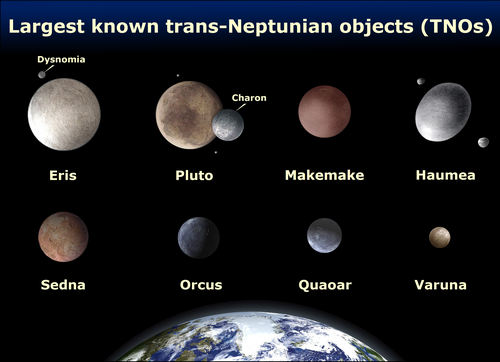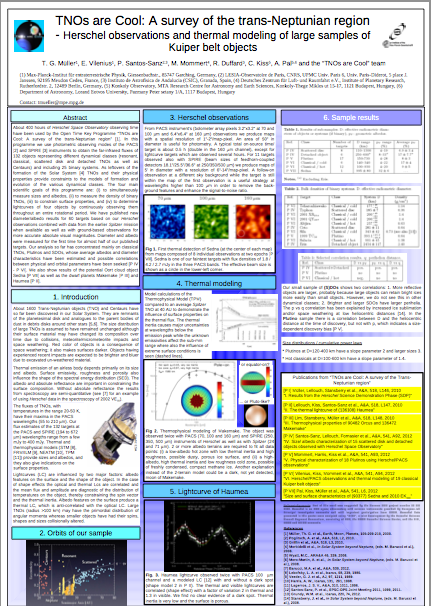Abstract
This site provides information for the community of the Open Time Key Programme (OT KP) with the Herschel Space Observatory titled "TNOs are Cool: A Survey of the Transneptunian Region".
Over one thousand objects have so far been discovered orbiting beyond Neptune. These trans-Neptunian objects (TNOs) represent the primitive remnants of the planetesimal disk from which the planets formed and are perhaps analogous to the unseen dust parent-bodies in debris disks observed around other main-sequence stars. The dynamical and physical properties of these bodies provide unique and important constraints on formation and evolution models of the Solar System. While the dynamical architecture in this region (also known as the Kuiper Belt) is becoming relatively clear, the physical properties of the objects are still largely unexplored. In particular, fundamental parameters such as size, albedo, density and thermal properties are difficult to measure. Measurements of thermal emission, which peaks at far-IR wavelengths, offer the best means available to determine the physical properties. While Spitzer has provided some results, notably revealing a large albedo diversity in this population, the increased sensitivity of Herschel and its superior wavelength coverage should permit profound advances in the field. Within our accepted project we propose to perform radiometric measurements of 139 objects, including 25 known multiple systems. When combined with measurements of the dust population beyond Neptune (e.g. from the New Horizons mission to Pluto), our results will provide a benchmark for understanding the Solar debris disk, and extra-solar ones as well.

Largest known TNOs of our Solar System. Image credits: NASA, https://en.wikipedia.org/wiki/Trans-Neptunian_object. Full resolution (link).

Poster of "TNOs are Cool" project (PDF).

Summary of Project Results: Sizes and albedos derived from the Herschel project. Related article: Eyes of Herschel survey enigmatic region beyond Neptune (pdf)
